Fact-checking Private Ryan: how accurate is Spielberg’s D-Day landing?
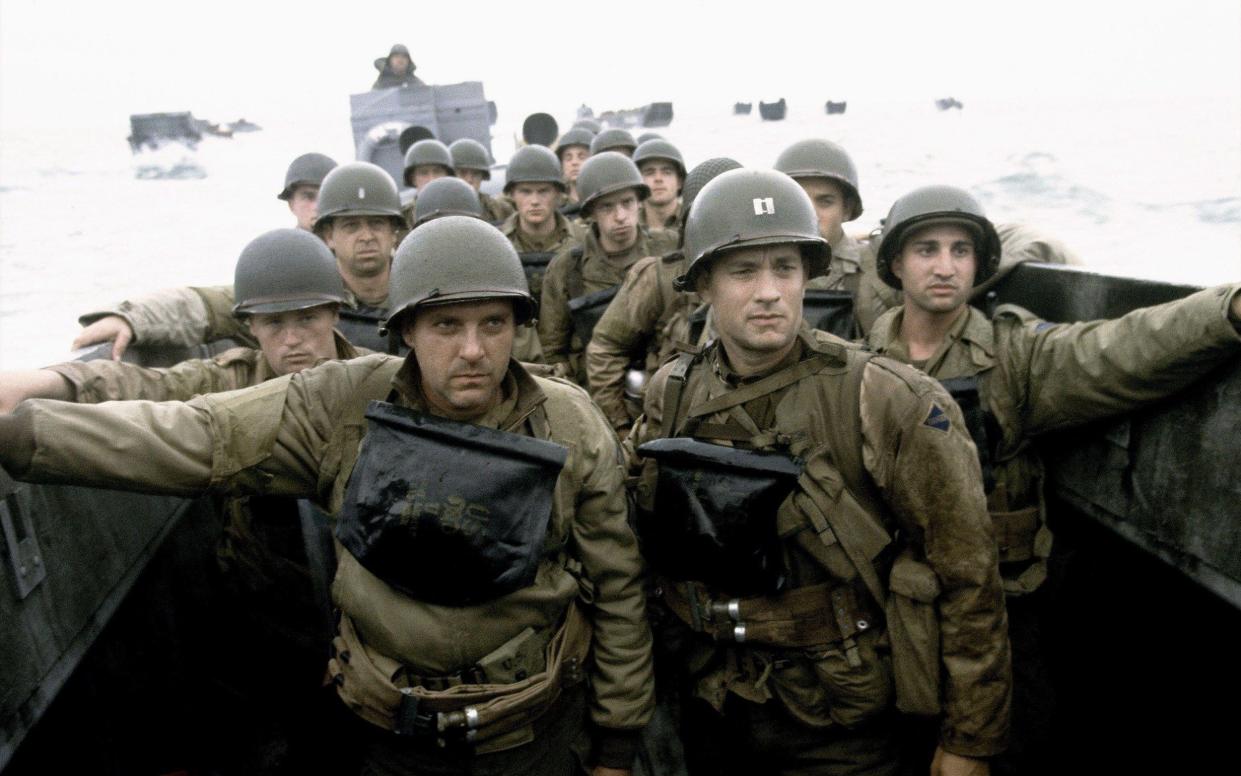
In the summer of 1998, Steven Spielberg was on a promotional tour of duty for Saving Private Ryan. Interviewed for the New Yorker, he recalled how as a child he’d heard his father’s World War Two stories. Arnold Spielberg had served with the US Army Corps – a radio operator and gunner on B-25s over Burma.
“He used to have reunions with his friends when I was growing up,” said Spielberg. “They’d all tell war stories, and they were horrifying. I kept wondering, ‘How come movies haven’t done it that way, if that’s what really happened?’” The Hollywood heroics of John Wayne et al – even in the relatively accurate D-Day epic, The Longest Day – did not match up with the harrowing reality. “And for many years I believed Hollywood,” admitted Spielberg.
Saving Private Ryan – released on July 24 1998 – changed how combat is depicted on screen. In the story, Captain John Miller (Tom Hanks) is part of the first wave to land on Omaha Beach. Surviving the brutal German defences, Miller and his men (Tom Sizemore, Ed Burns, Giovanni Ribisi, Vin Diesel, Adam Goldberg, Barry Pepper, and Jeremy Davies) are given a new mission: find Private James Ryan (Matt Damon) – whose brothers have all been killed – and send him home to his mother.
Twenty-five years on, the Omaha Beach scenes – filmed in Wexford, Ireland – are among the greatest 20 minutes in Hollywood history. The sequence is a thundering assault on the nerves and senses – a blur of chaos and carnage; concussion-inducing blasts and PTSD in action. And, unlike the old timey war films that veered far from Arnold Spielberg’s stories, it’s frighteningly real. See soldiers vomiting as they approach the beach; German machine-gunfire cutting them to shreds as the landing ramps open; and men drowning under the weight of their equipment. All true.
Realism, of course, is not necessarily the same thing as historical accuracy. Saving Private Ryan presents a truncated version of what happened on Omaha Beach. And the film has come under fire for a few often-cited inaccuracies – particularly for side-lining the other Allied nations involved in D-Day. But it’s hard to argue with actual veterans’ responses to the film. At the time, Saving Private Ryan was hyped on the reactions of the men who were really there – D-Day veterans stunned into silence or brought to tears watching the film. “It felt like I was right there again,” said one 101st Airborne Division veteran. “It was so damned real.” “That’s as real as a movie could get without the smell of gunpowder and putrefying bodies,” said another.
“I knew lots of Omaha Beach veterans,” says Paul Woodadge, a military historian and battlefield guide. “They all said it was most realistic in terms of the intensity and increased sensory experience – everything happening around you, the sounds and smell – it did more to change the public’s perception of combat than any film since.”
The real Private Ryan
The idea – a mission to save a sole surviving brother from the battlefield – struck screenwriter Robert Rodat while he walked through a cemetery with his baby son. In the cemetery was a war memorial commemorating local men killed in action. Rodat noticed numerous members of the same families had died in the Revolutionary and Civil wars. “And so, with this infant son in my arms and another sleeping in the house, the idea of losing a son to combat was painful beyond description,” said Rodat in 1998. “The idea of losing more than one was inconceivable. That’s where the first seed of Saving Private Ryan came from.”
There were similar examples from WW2. In January 1942, all five of the Sullivan brothers made headlines when they joined the navy at the same time. Their mother was unhappy about it. “You know how mothers are,” said one of the Sullivan boys. In November, all five were killed during the sinking of the USS Juneau.
Saving Private Ryan took its inspiration from the Niland brothers of Tonawanda, New York – Edward, Preston, Bob, and Frederick aka “Fritz”. In May 1944, Edward was shot down over Burma and presumed dead. Just three weeks later, Preston and Bob were killed in the Normandy invasion. According to an account by Father Francis Sampson – a Catholic priest with the 101st Airborne – Fritz got word that Bob had been killed and buried at Sainte-Mère-Église, so they travelled to find the grave.
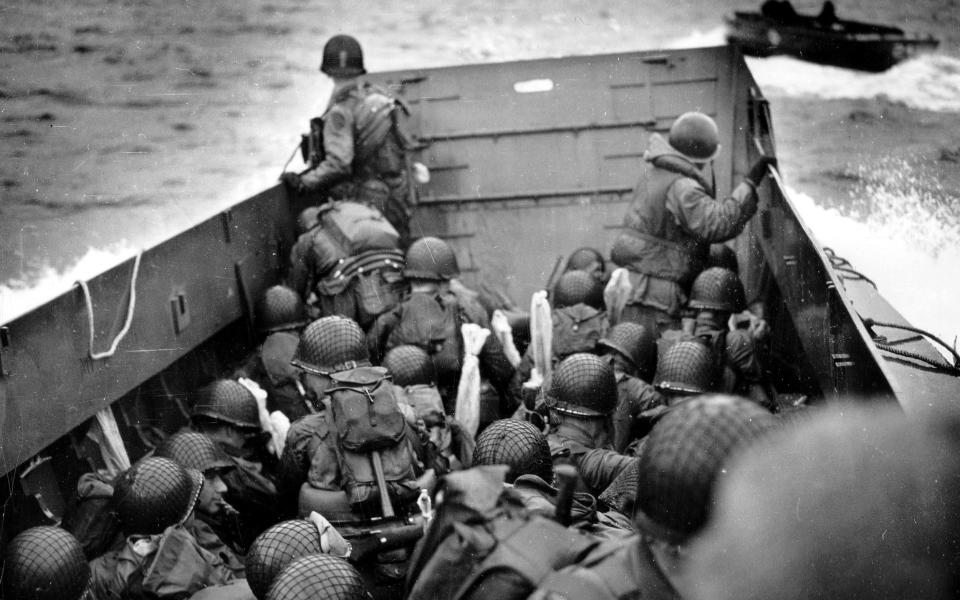
But they found Preston’s grave instead. “Father… that’s my brother too,” said Fritz. Sampson helped send Fritz back home to his mother. But – like Matt Damon’s Private Ryan in the movie – Fritz resisted the order. “Fritz refused to come home and was ready to be taken back in handcuffs,” wrote his nephew, Pete. “He wanted to stay and fight.” In reality, there was no mission to get him home. And it later turned out, incredibly, that older brother Edward had survived in Burma and was being held by the Japanese as a POW. Both Fritz and Edward Niland lived until the early 1980s.
As noted by historian Peter Caddick-Adams in his extensive history of the D-Day landings, Sand and Steel, Niland was likely too German-sounding for Hollywood. Private Ryan may take his name from Cornelius Ryan, author of The Longest Day. Ryan was correspondent for The Daily Telegraph and watched the events of D-Day unfold from inside a B-26 bomber. The Longest Day was made into an epic ensemble film in 1962 – the other movie that has shaped the public’s perception of D-Day.
‘The scene where Tom Hanks’s hands are shaking is spot on’
Saving Private Ryan was shopped around Hollywood by Rodat and producer Mark Gordon, but studios weren’t interested. WW2 wasn’t big box office in the 1990s. Gordon, however, got the script to Tom Hanks, and Hanks – still riding the success of his back-to-back Oscar wins for Philadelphia and Forrest Gump – was looking to work with Steven Spielberg.
Hanks also asked for a change to his character; like Spielberg, he wanted more realism. At that stage, Captain Miller was too much of a Hollywood cliché – a cigar-chomping Robert Mitchum-type. Hanks got a taste of realism, along with the other actors, at a bootcamp in England – a rite of passage when starring in a war film. Technical advisor and US Marine veteran Dale Dye seemed to delight in the punishing conditions. “The good thing about the training was that it was miserable, cold, horrible English weather and it rained all the time and we were in mud,” Dye said. “And I was running them four and five miles every morning.”
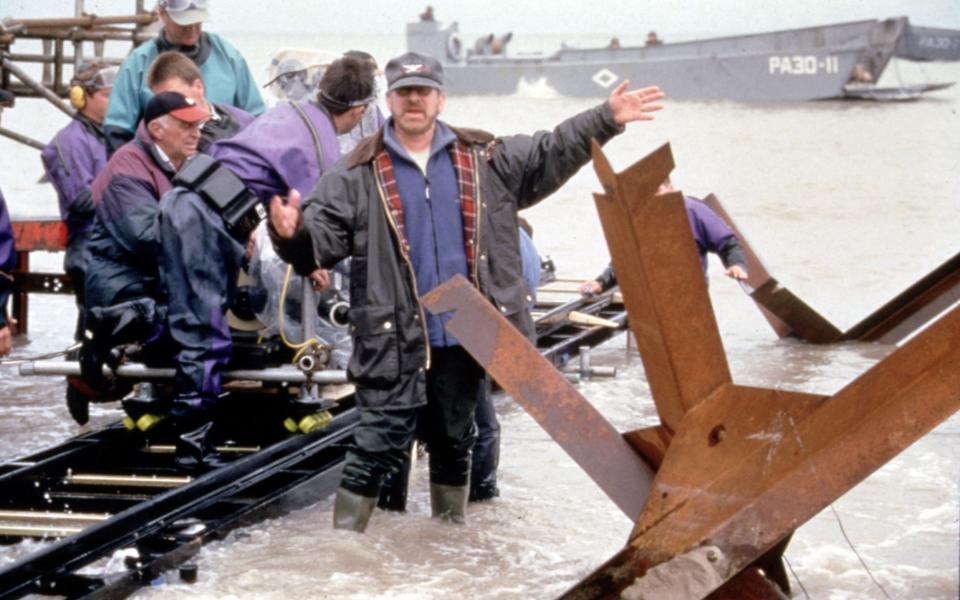
In the film, Hanks’s Captain Miller – a schoolteacher from small town Pennsylvania – leads Company ‘C’, 2nd Ranger Battalion as part of the first wave at Omaha. Landing at a section of the beach codenamed Dog Green – the second most westerly section of Omaha – Miller is charged with opening up the “D-1 draw”, one of five narrow exits from Omaha, which were guarded by Widerstandsnester (WN) defence nests.
Before he’s crawled an inch up the sand, Miller suffers from what soldiers at the time would call “shell shock” – frozen, sunk into another plane of existence, hands tremoring uncontrollably. “The scene where his hands are shaking is brilliant,” says Paul Woodadge. “I’ve met and talked to hundreds of World War 2 veterans. They all talk about the experience of straddling that line between pretending you’re not s––– scared and finding the inner strength to get the job done.”
Pinned down under heavy gunfire, with their forces decimated and no tanks for back-up, Miller thinks on his feet: his men gather weapons and ammo, blast the Germans with Bangalore torpedoes, and navigate the defensive wall with an improvised rear-view mirror (a bit of glass stuck on his bayonet with chewing gum).
The real leader of Company C, 2nd Ranger Infantry Battalion was Captain Ralph E. Goranson. At 41, Hanks was almost double the real captain’s age – Goranson was just 24.
In reality, Company C landed at Charlie section, just west of Dog Green. As detailed by Caddick-Adams, their objective – along with Company A of the 116th Infantry Regiment – was to clear the D-1 draw, leading to Vierville, then advance and attack the WN74 stronghold at Pointe de la Percée. They would make their way to Pointe du Hoc, where other 2nd Rangers had climbed the 110 ft cliff-face to take out six cannons (as depicted, though not quite correctly, in The Longest Day).
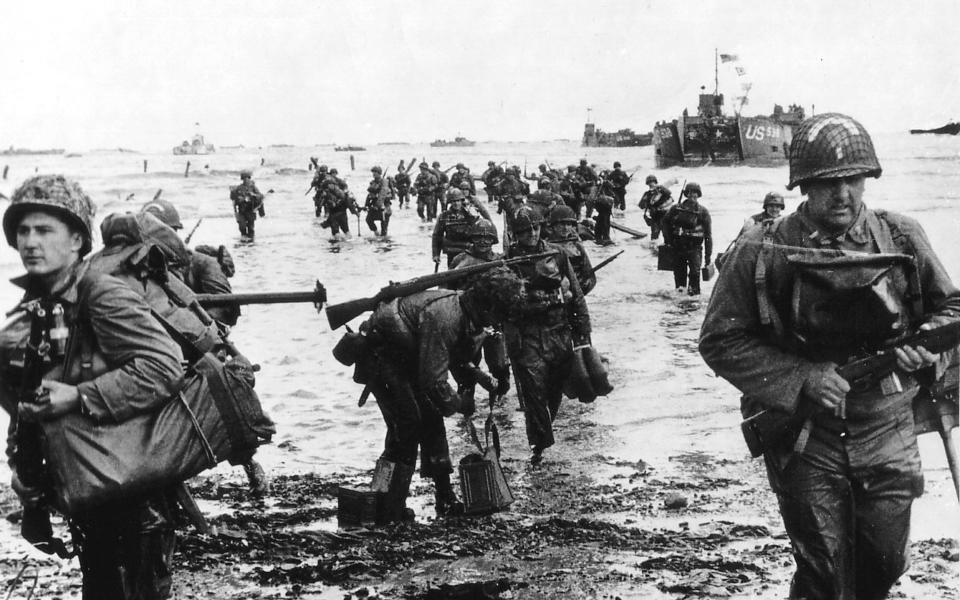
‘You leave the praying to me and you do the fighting’
Landing at 6.36am, Goranson’s Rangers were cut down by machine-gunfire and mortar shells. A blast of fire from 88mm cannons blew the landing ramp off. The mission to take out WN74 was already a failure; instead, Goranson led the men along the base of the cliffs, climbed up, and attacked the WN73 stronghold, one bunker at a time. (Part of WN73 was built into a house – the Villa Gambier – but the filmmakers didn’t include the houses and hotels that were dotted along the real Omaha Beach.) Approaching from the west, with the Germans concentrating their attacking eastwards, Goranson took WN73.
In Saving Private Ryan it takes Miller around 20 minutes to break through the German defences. It took Goranson until the afternoon to control WN73. Goranson had commanded 68 men – 39 of them were killed or wounded. Goranson himself had narrowly avoided death when he was alerted to a German potato masher grenade nestled between his legs. “Although not a part of their mission, Goranson’s decision to re-orientate his small group was probably the first glimmer of success anywhere along Omaha,” wrote Caddick-Adams.
Omaha stretched for five miles and had 14 defensive strongholds. It was a key area and was defended as such. Lieutenant Colonel Rudder, who led the climb up Point du Hoc, told Goranson: “You have the toughest goddamn job on the whole beach.” (Those words are echoed in Saving Private Ryan when Dennis Farina’s officer tells Miller after Omaha Beach: “It was a tough assignment, that’s why you got it.”)
For Caddick-Adams and Woodadge, the network of German trenches and bunkers in Saving Private Ryan resemble WN72 and WN73. Though, as Woodadge points out, none of the Omaha Beach strongholds looked like the fortress-like bunker seen in the film. The bunker – which is certainly cinematic – is borrowed from observation positions elsewhere along the Germans’ Atlantic Wall. “The real bunkers at Omaha tended to be smaller,” says Woodadge. “They were meant to be hidden.”
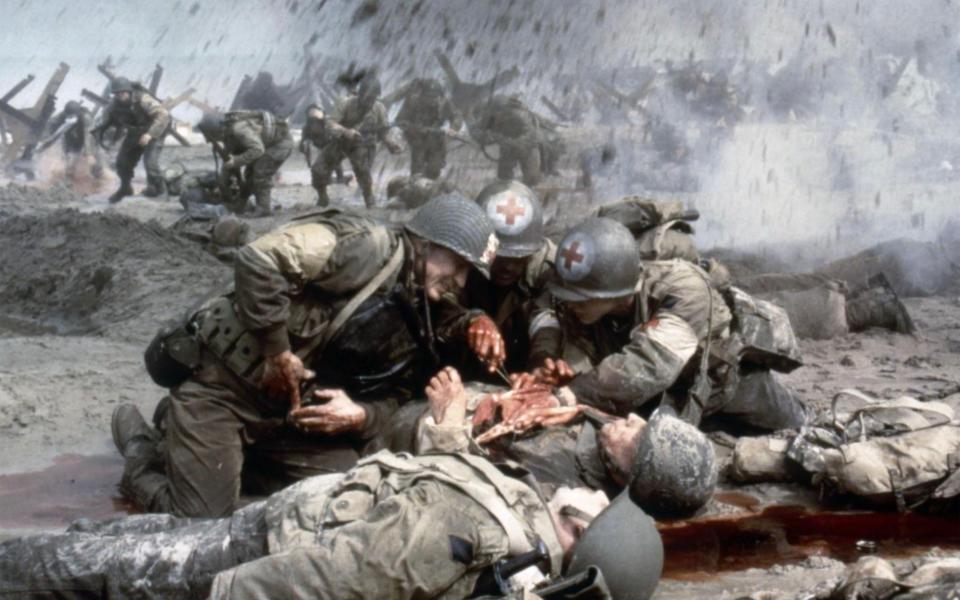
Woodadge credits many of the details for accuracy. “There’s some incredible detail in getting the kit right on the beach,” he says. “The assault vests they wear, the insignia are correct, the uniform is correct… using flamethrowers and Bangalore torpedoes.”
It’s also true – as Hanks’s Miller says – that there was a lack of tank support at first. Many tanks sank before they made it ashore; others landed but couldn’t move for all the obstacles and dead bodies. Other correct details include the presence of a chaplain, who clambers across the wounded and delivers their last rites while German gunfire whizzes over him. One real chaplain who landed on Omaha was Father Joe Lacy of the 5th Ranger Battalion. A short, plump man of 40, he offered the Rangers some hellfire-and-brimstone type advice on their way across the English Channel. “When you land on the beach and you get in there, I don’t want to see anybody kneeling down and praying,” he warned them. “If I do, I’m gonna come up and boot you in the tail. You leave the praying to me and you do the fighting.”
At one point, US soldiers shoot what seem to be surrendering Germans – a murky moment of Allied atrocity. Actually, the German soldiers are speaking Czech, the implication being that they’re forced conscripts. “There were lots of Czech, Polish, Russian and various other Ost-Battalion ‘volunteers’ in Normandy, especially Utah and Sword, but probably not on Omaha,” says Woodadge. “At least, they were not common. But I do like the fact the film shows that lots of nationalities actually made up the ‘German’ army at this point of the war.”
Technical advisor Dale Dye described one controversy from the film: that Hanks’ Miller has his rank marked on his helmet. Some critics said it was unrealistic – because it would mark him as a target. “It depended on the unit,” said Dye after research.
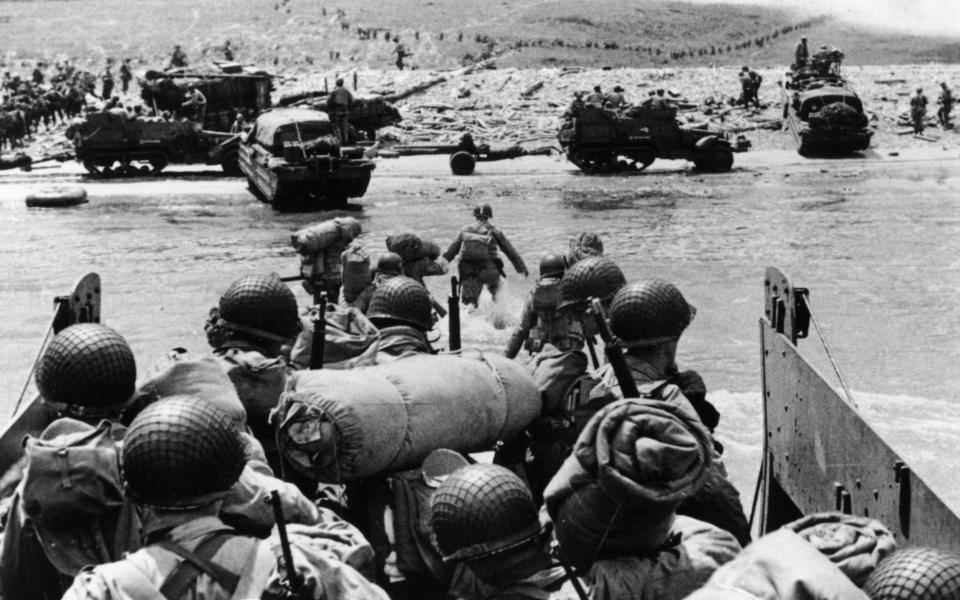
Where were the Brits?
In one scene following the D-Day carnage, Sgt Horvath (Tom Sizemore) collects earth in a tin marked “France”, which he stashes alongside tins marked “Italy” and “Africa” – a nice character detail but a Hollywood invention. “It’s highly unlikely that a Ranger could have done those previous landings,” says Woodadge. “For nearly all the Rangers that came ashore on D-Day, it was their first combat.” Similarly, crack-shot sniper Jackson (Barry Pepper) – skilled enough to pop out German’s eyeball at 450 yards – is a bit of a trope. Snipers really weren’t an American army thing in the ETO [European Theatre of Operations] in 1944,” says Woodadge. “I’m not saying they didn’t have them, but the Germans used snipers a lot more than the Allies did.”
A commonly cited inaccuracy comes at the very start, when Company C arrives via American LCVP landing craft; in reality, the 2nd and 5th Ranger Battalions arrived in Royal Navy LCAs. The coxswain would have been British, not American as shown in the film (the American coxswain in the film is actually played by a Brit – former Royal Marine, Ronald Longridge).
The deliberate inaccuracy puts Saving Private Ryan on the same spectrum as The Great Escape and U-571 – notorious for side-lining Brits and dramatising American glory. Omaha was largely American, but not entirely. Eight of the 15 ships off Omaha were British. Other navies, including Canadian, French, and Dutch all played a role. And later in the day, at around 5pm, around 180 RAF men landed on Omaha and took heavy losses – 48 casualties.
As reported in 1998, some British veterans were unhappy with Saving Private Ryan. One Royal Navy cox was “disappointed”. Another Royal Navy vet, who had led the wave of landing crafts to Omaha, was miffed with the quality of Spielberg’s research. “I can’t see how he can possibly justify winning an Oscar,” said the vet.
Spielberg made no bones about the fact that Saving Private Ryan is an American story. “There is no role for the British in Saving Private Ryan,” Spielberg told the BBC at the time. “There certainly was a major role for the British in Normandy and in the invasion of Paris. But Saving Private Ryan is the story of Omaha Beach at 6.30 in the morning – there were no Brits there, and no Brits on Utah beach.”
Dale Dye later said much of the production team were British and understood WW2 from a British perspective. “A lot of my work was to kind of un–Brit them and get them looking at World War II from an American perspective,” said Dye.
‘It’s left everybody with an idea that D-Day was near to disaster’
There are some inaccuracies on the beach. One of the beach defences, wooden ramps that spike upwards like log cannons, were placed the wrong way around. In the film they point towards the sea; in real life they pointed towards the beach, and could have mines stuck to the log, flipping landing craft as they approached.
Details aside, Paul Woodadge credits the kind of improvisation depicted during the chaos and confusion on Omaha Beach as being “100 percent accurate”.
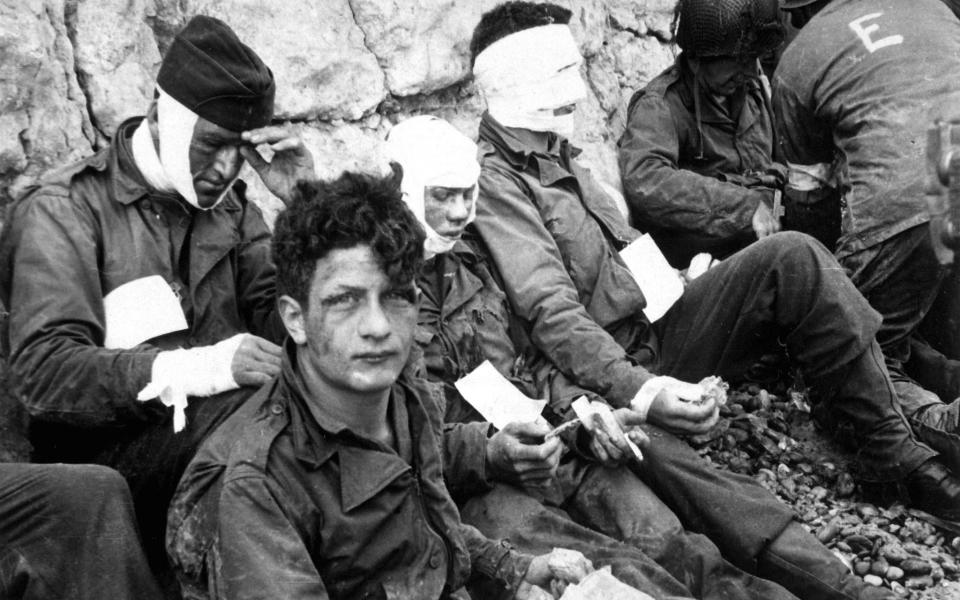
“Omaha Beach started to go wrong because of various things,” he explains. “They were unloaded too far away from the shore, there were navigation issues, the naval bombardment hadn’t been very accurate, the aerial bombardment hadn’t been very accurate, they’d lost half of the tanks coming in, they found themselves in the wrong place, and there were leadership issues. A whole catalogue of things went wrong.
“The solution was individual acts of initiative and leadership. What they completely accurately show is people like Captain Miller and Sgt Horvath [the character played by Tom Sizemore] saying, ‘We’re not where we’re supposed to be, what we need to do is improvise a way to get beyond whatever’s ahead of us.’ The plan goes out of a window, so the lieutenants and sergeants and corporals go, ‘Let’s grab whatever we’ve got and knock out that thing over there.’”
For Woodadge, one of the biggest errors is its skewed impression of the Omaha invasion. “It’s left everybody with an idea that D-Day was near to disaster,” he says. “It shows you a window of Omaha Beach when things were at their worst. After the first wave landed, there were lots of deaths and the Americans were struggling to get off the beach. The first wave had it really bad – we’re talking 85 per cent losses. The second wave was down to 50 per cent. The third wave went down to 20 per cent. In about three hours you could be coming ashore at Omaha Beach and almost walking ashore to no gunfire. Omaha Beach was a success that started badly.”
Omaha is often called the bloodiest beach. It’s true that more men died there, though more men landed there too – over 34,000. According to the National D-Day Memorial in Bedford, Virginia, 4,415 were killed on D-Day – 2,502 Americans and 1,913 other Allies, many of whom were British. From those losses, 2,400 were killed on Omaha Beach, including crews from warships and landing craft. The first few hours on Gold, Juno, and Sword also incurred heavy losses. The Canadians – all too often left out of D-Day stories – lost 340 men on Juno.
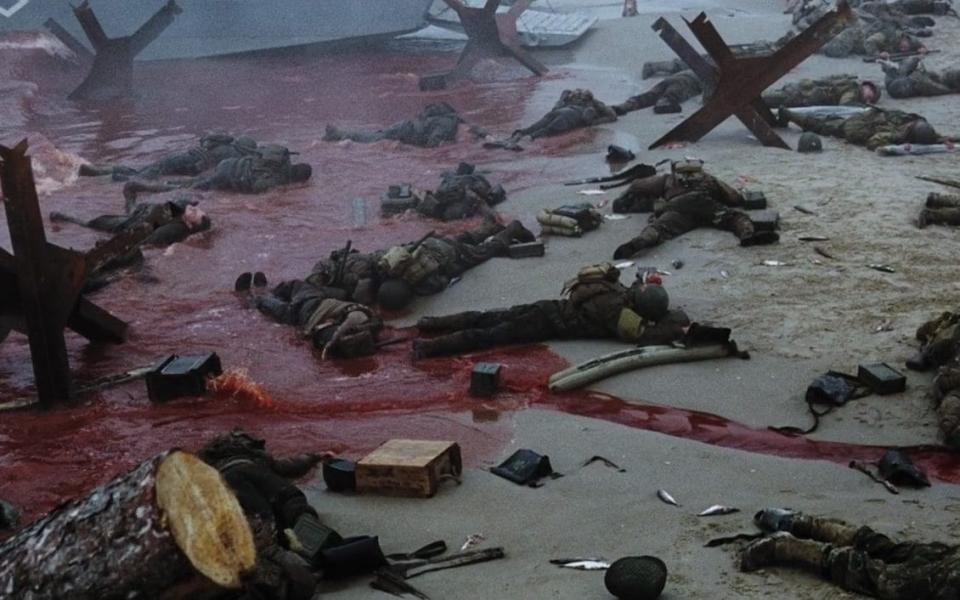
‘The Americans did not come up against any Tiger Tanks in Normandy’
Once the action moves off Omaha, Saving Private Ryan is a largely fictional adventure. Historical fact doesn’t – and arguably shouldn’t – get in the way of telling a rollicking good story. For instance, Private Ryan is part of 506th Parachute Infantry, 101st Airborne. As seen in the film, paratroopers missed their drop zones and were scattered for miles. But the real 101st Airborne were dropped inland from Utah Beach to take control of the exit routes.
“If ever there was going to be a mission to find a 101st Airborne paratrooper – and there wasn’t – it would have started from Utah Beach,” says Woodadge.
There are hints of real events. After locating Ryan in the town of Ramelle (actually a set built in Hatfield, England), Miller and his surviving men join a battle to defend a bridge on the Merderet River. Ramelle is fictional though the Merderet River is real.
The battle has shades of 82nd Airborne’s battle at La Fière – a four-day fight for control of a small stone bridge over the Merderet. The movie version is really a greatest hits of WW2 action: Tiger Tanks, close quarters fighting with the SS, and P-51 Mustangs flying in to save the day. “The Americans did not come up against any Tiger Tanks in the entire Normandy campaign,” says Woodadge. “They came up against German armour a lot, but not Tiger Tanks. You have P-51 Mustangs because everybody knows them – they’re the Cadillacs of the skies – but it would have been far more likely to have P-47 Thunderbolts doing the ground support role.”
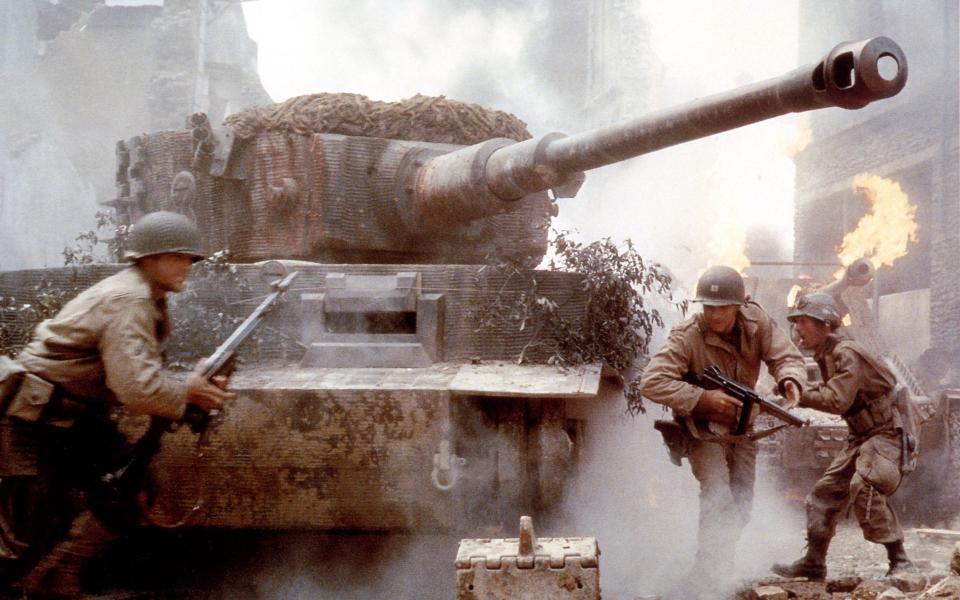
Even the Germans’ buzz cut hairdos – which they wouldn’t have had under their helmets – is a bit of shorthand for movie-fied Nazi menace.
According to Dale Dye, Spielberg had been dead set on having Tiger Tanks in the film. Interviewed for Steven Jay Rubin’s book, Combat Films, Dye explained that they couldn’t find any Tiger Tanks, but found a pair of Soviet T-55 tanks in England. They used the chassis, rebuilding the hulls to look like Tiger Tanks.
Saving Private Ryan was nominated for 11 Oscars and won five. The triumph of the film, way beyond issues of historical accuracy, is that it does put you there. Not just on Omaha Beach, but in close proximity to the reality of the terror: the men holding their intestines and screaming for their mothers; the men dying from tiny bullet holes fountaining with blood; the look and sound of men who know they’re about to die, the life extinguishing from their eyes. Amongst that carnage, it captures the real fascination with war: trying to understand the unimaginable fear and courage; what it would be like to face it ourselves.
Spielberg achieved his mission. As he told producer Mark Gordon: “People are going to feel like they’ve been at D-Day when they see this thing.”


